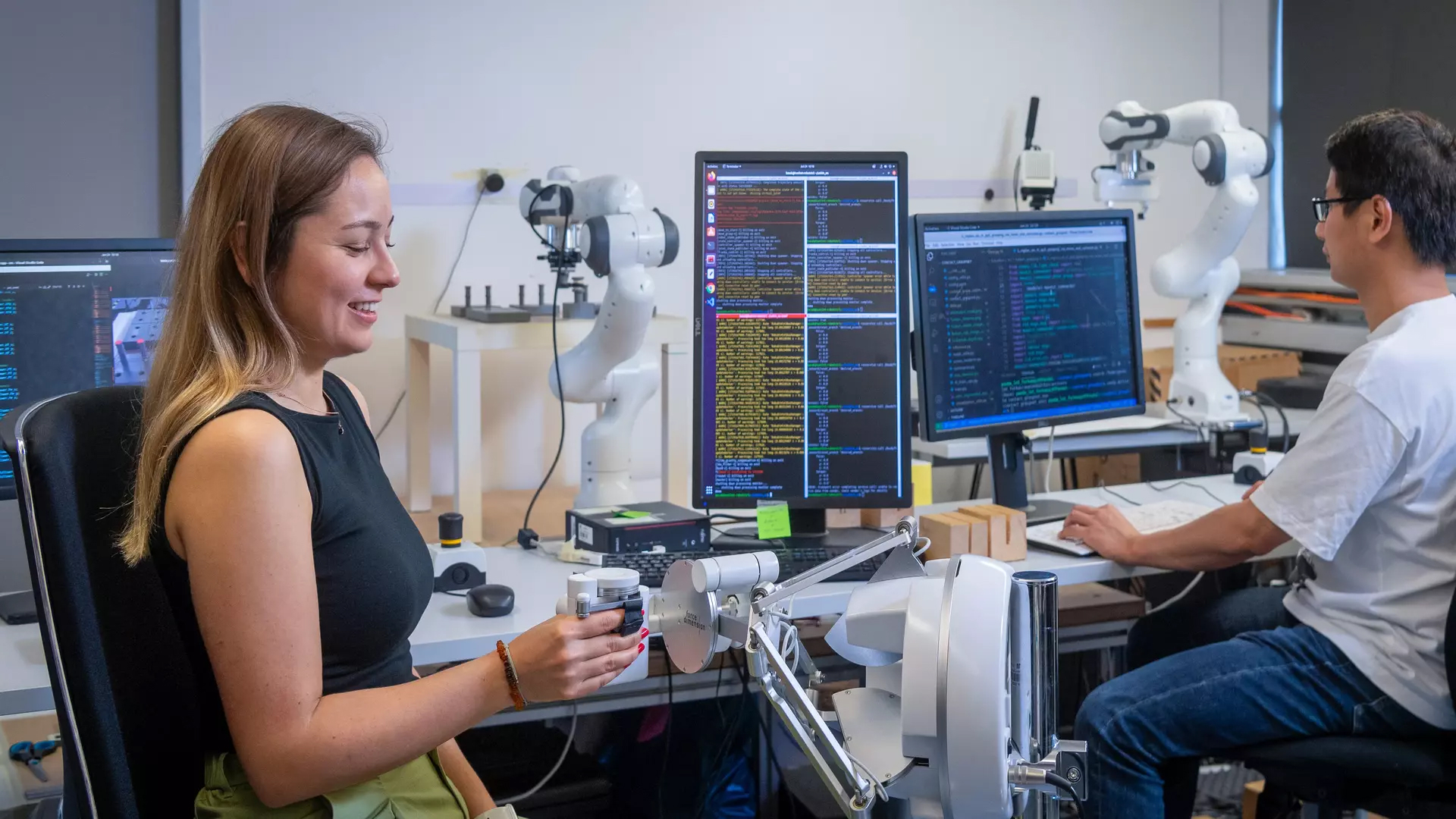
The next evolution of the internet could involve digitally transmitting the sense of touch, which may transform remote surgery and usher in a whole new era of online gaming.
Researchers have developed a "Haptic Codecs for the Tactile Internet" (HCTI) standard that allows haptic information to be sent both ways across a network via data packets that are neither excessive in size nor require large amounts of bandwidth. They outlined the details in a paper published June 14 by the Institute of Electrical and Electronics Engineers (IEEE) Standards Association.
Currently, transmitting tactile feedback over a remote connection — for instance, when operating a robot arm onsite — requires data packets to be sent both ways 4,000 times per second. While this allows for feedback to be realistic and ensures robust data transmission, it places very high demands on the network that transports the data packets, said lead author of the paper Eckehard Steinbach, professor of media technology at the Technical University of Munich (TUM), in a statement.
To overcome this, the HCTI standard uses compression and reduces this clock rate to 100 times per second, which Steinbach said is "close to the human perception threshold."
The HCTI standard optimizes the control loop between the sender and receiver, alongside compressing information in a similar way as is used to send audio or image files across the internet — but in a two-way format.
"The new codec is something like JPEG or MPEG, only for haptics," said Steinback, adding: "In the case of JPEG, MP3 and MPEG, many applications emerged after the standards were made public. I expect the same from our new haptic codecs."

Touch transmission
Codecs compress information sent across the internet by cutting out data beyond human perception. In JPEG and MP3 files, that means removing visual and audio elements that humans aren't likely to notice. This results in the loss of high fidelity, say in colors or high-frequency sounds, but makes for a much smaller easily transferred data packet.
But that process is normally a one-way transmission. Given haptic feedback requires two-way communication and high fidelity to be effective remotely, it requires high-bandwidth and low-latency connections. When operating robots on-site this isn’t a huge problem, but operating them remotely poses challenges.
While information is sent through fiber optic networks at the speed of light, it still travels at a maximum of 300 kilometers in one millisecond (ms). In terms of pure transmission time, that means a haptics data packet would take 30 ms to travel from Germany to Japan — not counting any delays in transmission caused by the receiving device. This isn't fast enough for effective remote tactile feedback, the scientists said in the statement.
But compressing the data packet size, yet still transferring enough information for haptics to be effective, allows for tactile feedback to be transmitted without a delay that’s noticeable to humans. The only downside, the researchers added, is that the forces exerted by a robot are slightly dampened when fed back to a controller — meaning hard surfaces can feel softer, for example.
The HCTI standard could have a variety of future applications, particularly in medicine, the scientists said. Most notably, it could be used in telesurgery, where an in-theater robot could be controlled remotely by an expert surgeon in another continent. A doctor could also perform a remote ultrasound of a patient in an ambulance, thereby speeding the process of delivering aid.
Haptic feedback could also improve gaming and entertainment experiences, with more realistic feedback when gaming online or in so-called "4D cinemas." It could, for example, convey the physical feeling of a handshake between two players. This could also be applied to the best virtual reality (VR) and augmented reality (AR) headsets to deliver better immersion.







